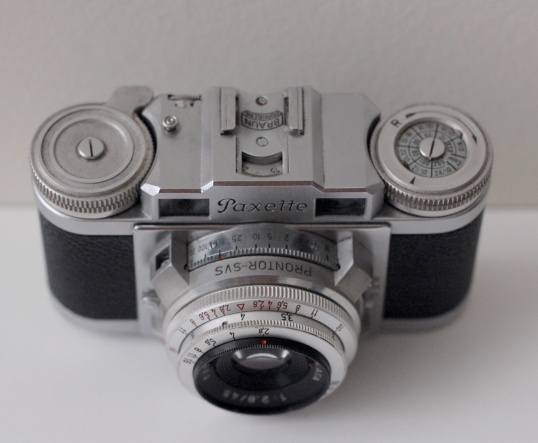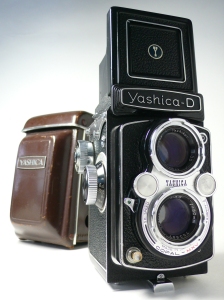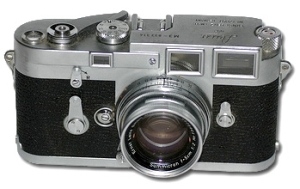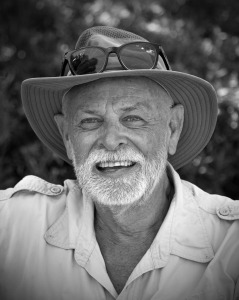Braun Paxette Rangefinder 35mm Camera
I was born in 1947 (just two short years after the end of WWII) and spent my formative years growing up in America suburbia in the 1950s. Looking back on it now it was an idyllic time for a young boy to come of age. This was the time of Truman and Eisenhower, the Pluto Platter (the forerunner of the Frisbee), the 57 Chevy, lunch counters and soda shops. It was also the time of the Cold War, the threat of nuclear annihilation and rampant racism.
1940s Kodak Box Camera
Photography has been an important part of my life since the beginning. I started taking my first photos in 1954 when I was seven years old, that was sixty-two years ago. My first camera was a Kodak box camera (a camera my mom used in the 1940s) using black & white 120-film (roll film). Holding the box one way resulted in a landscape (horizontal) shot, holding it the other way produced a portrait (vertical) shot. There was no focusing, no aperture setting, or shutter speed setting. Most cameras defaulted to 1/30s at f/11 using ASA 40 film.
Nikon F Single-lens Reflex 35mm Camera
My dad always had cameras. The Braun Paxette pictured at the top of this post was his carry around camera. It was a small, palm-sized, rangefinder, 35mm camera manufactured in Nuremberg, Germany. The Germans owned the (professional) market in those days with Leica, Rolleiflex and other great Teutonic optics. By the early 1960s, however, Nikon had dealt them an almost lethal blow with the introduction of the first practical single-lens reflex (SLR) camera, the Nikon F (my favorite 35mm camera of all time).
My dad encouraged my photography and always made sure I had something to shoot with. I was NEVER allowed to use his stuff, but he taught me a lot. Dad was more of a tech-weenie than a creative photographer, he loved the equipment and the technical side of things. Don’t get me wrong, he took some good photos in his time, but it was the equipment that interested him most. He was a Building Designer (an Architect) and a pretty good amateur artist, but his brain was hardwired more towards logic and mathematics.
I can remember many an evening in our homemade darkroom (we would temporarily convert our second bathroom much to my mom’s consternation) developing black & white film and making contact prints. The chemical smell of the developer and the fixer still permeates the nostrils of my recollection, and the magic of seeing my images slowly resolve themselves in the red glow of the darkroom light was pure magic. You can’t replicate that experience in Photoshop or Lightroom, neither the smells or the father-son camaraderie.
Yashica-D Twin-lens Reflex Camera
I remember how proud my dad was when, as a Freshman in High School, I was a winner in Kodak’s National High School Photography Contest in 1962. With my winnings, and some added dollars from him, we went out and bought my first “Big Boy” camera, a Yashica-D twin-lens reflex (TLR) camera. Finally I had a camera that I could focus, set both the shutter speed, and the aperture. I had arrived. When my dad passed in 1985 (from self-inflicted gunshot wounds) I inherited all of his pristine photo equipment. It’s all in mint condition even though I used it for my own photography. Since my conversion to digital photography in 2009 it’s all been relegated to my camera museum back in the States.
I think my dad would still be proud of me. I had always wanted to be a professional photographer, but somehow life always seemed to interfere. Finally, at the venerable age of sixty-four, I struck out to realise my dream. I founded Indochine Photography www.IndochinePhotography.me in 2009, and left the States in early 2012 to fulfil my quest of photographing the world, its wildlife, and its people. I have achieved my dream, I am a professional photographer, a published writer, and a seasoned world traveller. I think my dad would like the work I produce these days, but he would probably like the equipment I have even better.
Leica M-3 Rangefinder 35mm Camera
My equipment isn’t kept so pristine anymore. Travelling the way I do it’s impossible to prevent dings, dents, and scratches. The digital photographic equipment I lug around the world are simply tools to create my art. There is no romantic attachment. Digital lacks the aesthetic appeal of the vintage film cameras, a different era. Digital is better. Photoshop is better. I have no regrets, only gratitude for coming of age at a great time. But let me look at, or hold, a classic Leica M-3, Rolleiflex TLR, or Nikon F SLR, and you will see me start to drool (it’s a Pavlov thing).
- Keith F. Dennstedt
- Joyce M. Dennstedt
I was mad at my dad for a long time after his suicide (maybe I still am). But approaching seventy I have a little more perspective, a little more understanding. He was a good dad in many ways (and not so good in other ways). He was born a dwarf, but married a beautiful woman, and fathered three sons, became a talented Building Designer, pilot, artist, and photographer. Not bad for a man who faced some real obstacles in his life. I would like to think he would be proud of me and my accomplishments. I can’t think of him without remembering the good times of growing up in the 1950s (and the cameras, film, developer, and fixer, and seeing the magic of a photo resolve right before my very eyes). Thanks dad.
Stephen F. Dennstedt
Photographer, Writer and World Traveller
Lima, Peru








Great post. Thanks for sharing.
Thanks Don. 🙂